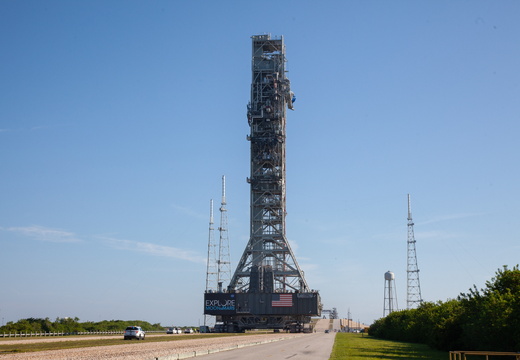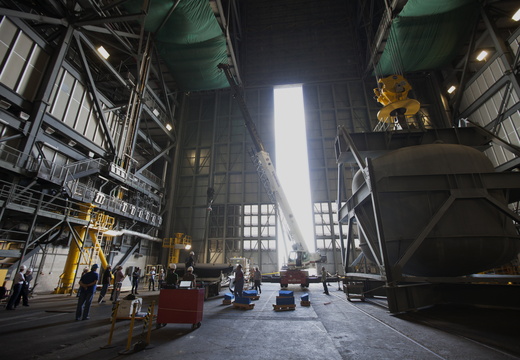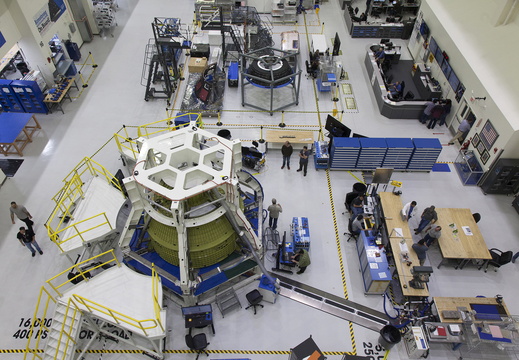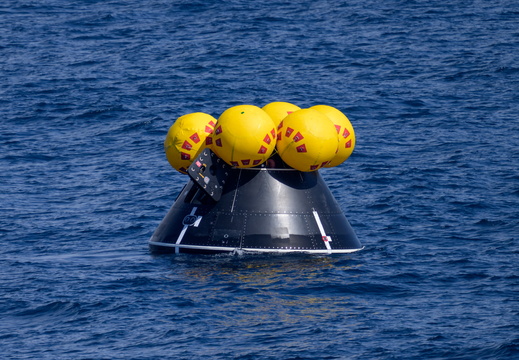
UNDERWAY RECOVERY TESTS
Program Overview
NASA's Orion Underway Recovery Tests are a series of evaluations conducted in collaboration with the U.S. Department of Defense to develop and refine procedures for retrieving the Orion spacecraft upon its return from space missions. These tests are crucial for ensuring the safety and efficiency of recovery operations, particularly for crewed missions under NASA's Artemis program aimed at lunar exploration.
Objectives
The primary goals of the Underway Recovery Tests include:
Validating recovery hardware and techniques in open water conditions.
Training recovery teams, including NASA personnel and U.S. Navy sailors, in real-world scenarios.
Ensuring the safe extraction of astronauts from the Orion capsule post-splashdown.
Testing communication and coordination among recovery assets such as ships, helicopters, and support boats.
Recovery Operations
Recovery operations typically involve:
Deployment of U.S. Navy amphibious transport dock ships equipped with well decks to facilitate spacecraft retrieval.
Use of helicopters and small boats to locate and secure the Orion capsule after splashdown.
Extraction of crew members from the capsule and transportation to the recovery ship's medical facilities for evaluation.
These operations are meticulously planned and rehearsed to handle various sea conditions and potential contingencies.
Collaborative Effort
The Underway Recovery Tests exemplify the strong partnership between NASA and the U.S. Department of Defense. The U.S. Navy's unique capabilities, including amphibious ships with advanced medical facilities and skilled personnel, make it an ideal partner for these recovery operations. This collaboration ensures that NASA's human spaceflight missions can be conducted with the highest standards of safety and efficiency.
Future Prospects
As NASA progresses with the Artemis program, ongoing recovery tests will continue to play a vital role in mission planning and execution. The lessons learned from these tests contribute to the continuous improvement of recovery procedures, ensuring the well-being of astronauts and the success of future deep space exploration endeavors.
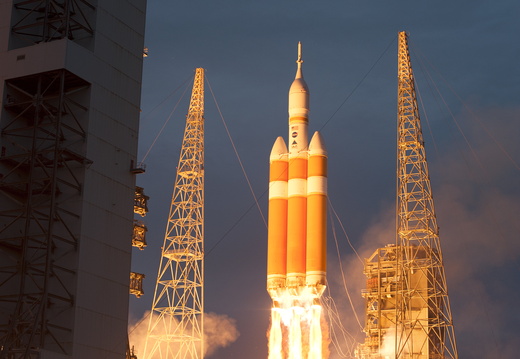
EFT-1
Mission Objective
Orion Exploration Flight Test-1 (EFT-1) was NASA's inaugural uncrewed test flight of the Orion Multi-Purpose Crew Vehicle. The mission aimed to evaluate critical systems, including avionics, heat shielding, and parachute operations, in preparation for future deep-space missions carrying astronauts.
Mission Highlights
EFT-1 launched on December 5, 2014, at 7:05 a.m. EST from Cape Canaveral Air Force Station's Space Launch Complex 37B, atop a United Launch Alliance Delta IV Heavy rocket. The spacecraft completed two Earth orbits, reaching an apogee of approximately 3,600 miles (5,800 kilometers), significantly higher than the International Space Station's orbit. This altitude exposed Orion to high-radiation zones, testing its systems' resilience. During re-entry, Orion achieved speeds near 20,000 mph (32,000 km/h), simulating conditions of a return from lunar missions. The heat shield, measuring 16.5 feet (5 meters) in diameter, withstood temperatures approaching 4,000 degrees Fahrenheit (2,200 degrees Celsius). The mission concluded with a successful splashdown in the Pacific Ocean, approximately 600 miles (965 kilometers) southwest of San Diego, where recovery teams retrieved the capsule for post-flight analysis.
Launch
Date: December 5, 2014
Time: 7:05 a.m. EST
Launch Vehicle: Delta IV Heavy
Launch Site: Space Launch Complex 37B, Cape Canaveral Air Force Station, Florida
Orbit
Perigee: Approximately 560 miles (900 kilometers)
Apogee: Approximately 3,600 miles (5,800 kilometers)
Inclination: 28.8 degrees
Orbital Period: Approximately 89 minutes
Mission Duration
4 hours, 24 minutes
Landing
Date: December 5, 2014
Time: 11:29 a.m. EST
Location: Pacific Ocean, approximately 600 miles southwest of San Diego, California
Recovery Operations: Conducted by NASA and U.S. Navy teams
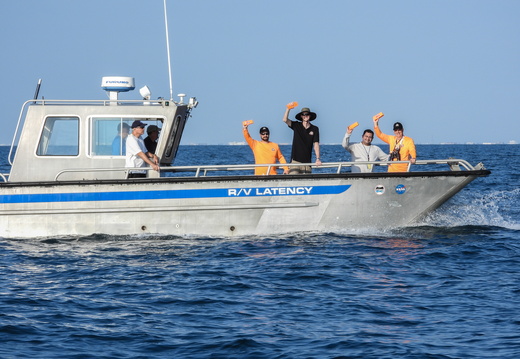
ASCENT ABORT 2
Mission Objective
Ascent Abort-2 (AA-2) was a critical uncrewed flight test conducted by NASA to demonstrate and validate the performance of the Orion spacecraft's Launch Abort System (LAS). The primary objective was to ensure that the LAS could effectively pull the crew module away from the launch vehicle in the event of an in-flight emergency during ascent, thereby safeguarding astronaut lives during future missions. :contentReference[oaicite:2]{index=2}
Mission Highlights
AA-2 launched on July 2, 2019, at 7:00 a.m. EDT from Space Launch Complex 46 at Cape Canaveral Air Force Station in Florida. The test employed a modified Peacekeeper missile first stage, known as the Abort Test Booster (ATB), to propel a test version of the Orion crew module equipped with a fully functional LAS. Approximately 55 seconds into flight, at an altitude of about 31,000 feet (9,400 meters) and traveling at Mach 1.3 (over 1,000 mph), the abort sequence was initiated. The LAS's abort motor fired, rapidly pulling the crew module away from the booster. Subsequently, the attitude control motor reoriented the capsule, and the jettison motor separated the LAS from the crew module. Twelve data recorders were ejected during descent and were successfully recovered from the Atlantic Ocean for analysis. :contentReference[oaicite:3]{index=3}
Launch
Date: July 2, 2019
Time: 7:00 a.m. EDT
Launch Vehicle: Abort Test Booster (modified Peacekeeper missile first stage)
Launch Site: Space Launch Complex 46, Cape Canaveral Air Force Station, Florida
Flight Profile
Abort Initiation: Approximately 55 seconds after launch
Altitude at Abort: ~31,000 feet (9,400 meters)
Velocity at Abort: Mach 1.3 (~1,000 mph or 1,600 km/h)
Mission Duration
Approximately 3 minutes and 13 seconds
Recovery
Twelve ejectable data recorders were deployed during descent and successfully retrieved from the Atlantic Ocean for post-flight analysis. :contentReference[oaicite:4]{index=4}
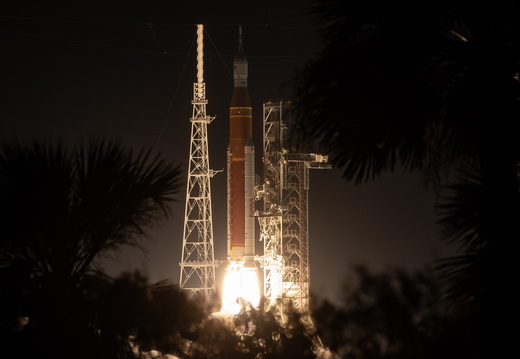
ARTEMIS 1
Mission Objective
Artemis I was NASA's first uncrewed flight test in the Artemis program, aimed at validating the integrated performance of the Space Launch System (SLS) rocket and the Orion spacecraft. The mission's primary objectives included testing Orion's heat shield during high-speed re-entry, assessing the spacecraft's systems in deep space, and laying the groundwork for future crewed lunar missions.
Mission Highlights
Artemis I launched on November 16, 2022, at 1:47 a.m. EST from Launch Complex 39B at NASA's Kennedy Space Center in Florida. The SLS rocket propelled the Orion spacecraft into a distant retrograde orbit around the Moon, traveling approximately 280,000 miles from Earth. Orion spent several days in lunar orbit, capturing detailed images and collecting data before executing a return trajectory burn. The mission concluded with Orion's successful re-entry into Earth's atmosphere and splashdown in the Pacific Ocean on December 11, 2022, at 12:40 p.m. EST. This flight provided critical data on spacecraft performance, radiation exposure, and navigation systems, informing future Artemis missions.
Launch
Date: November 16, 2022
Time: 1:47 a.m. EST
Launch Vehicle: Space Launch System (SLS) Block 1
Launch Site: Launch Complex 39B, Kennedy Space Center, Florida
Orbit
Perigee: Approximately 100 miles (160 kilometers)
Apogee: Approximately 40,000 miles (64,000 kilometers) beyond the Moon
Inclination: Lunar trajectory
Orbital Period: Variable
Mission Duration
25 days, 10 hours, 53 minutes
Landing
Date: December 11, 2022
Time: 12:40 p.m. EST
Location: Pacific Ocean, off the coast of Baja California
Recovery Operations: Conducted by NASA and U.S. Navy teams
